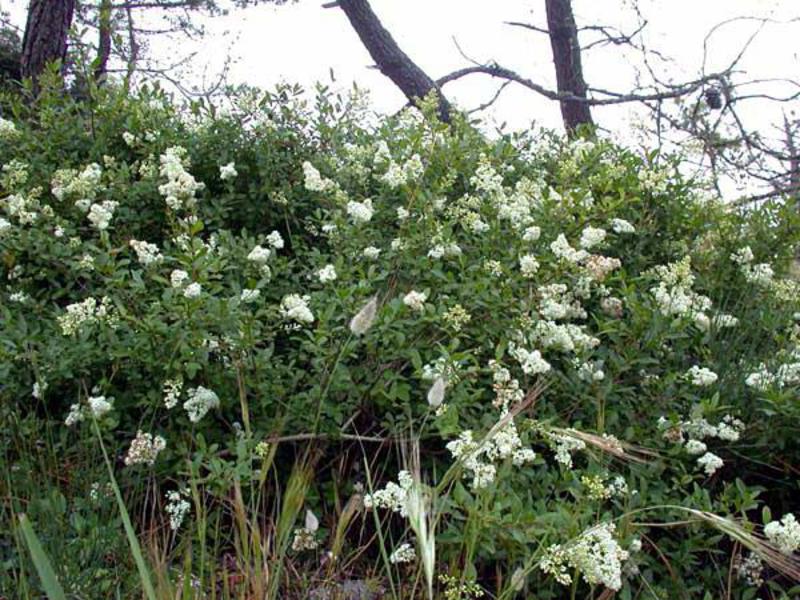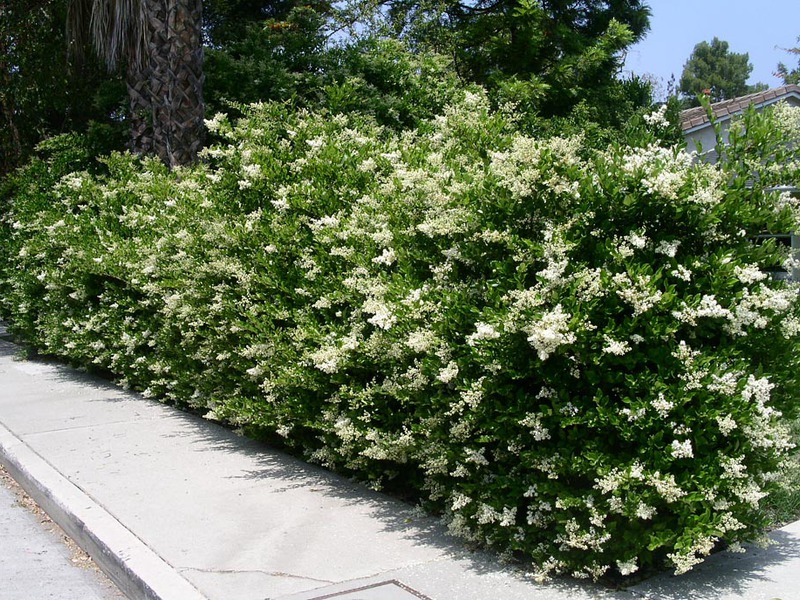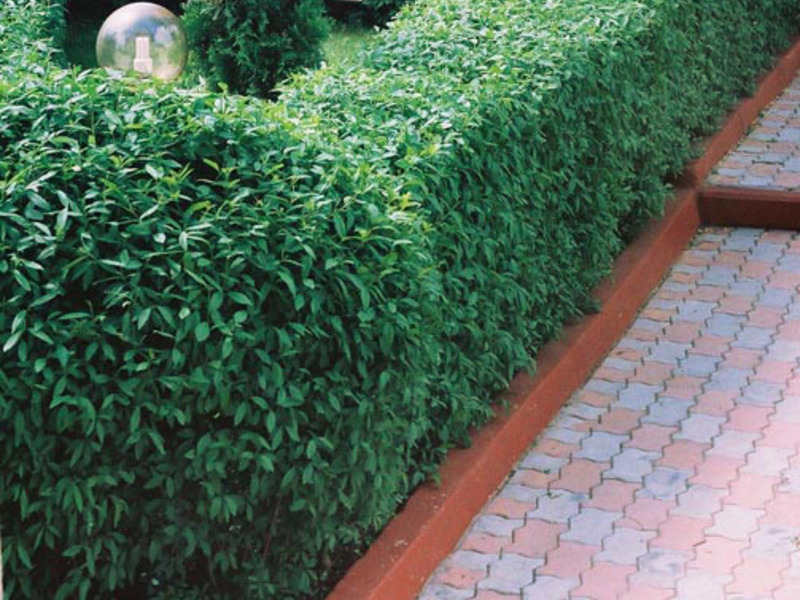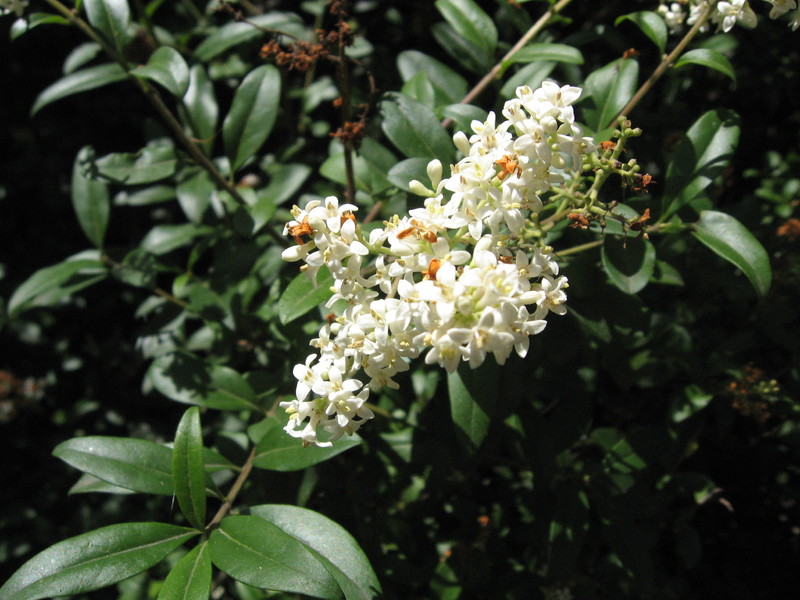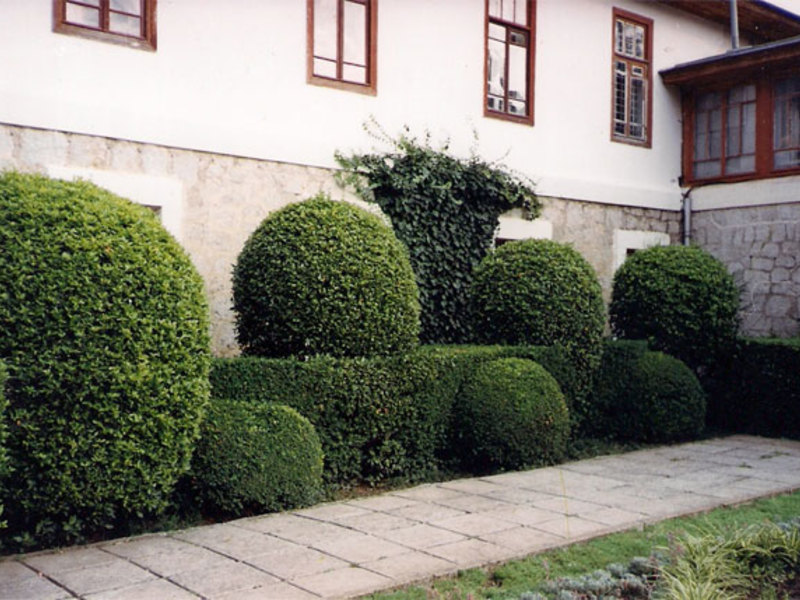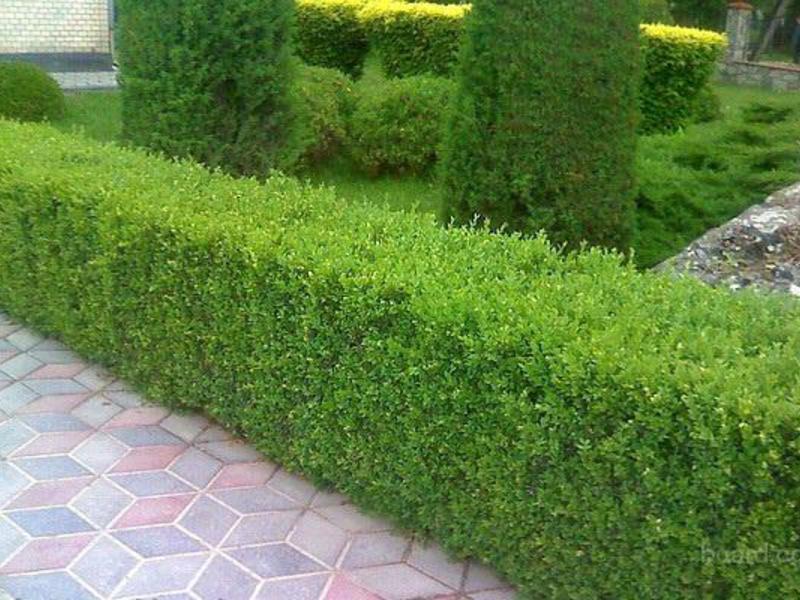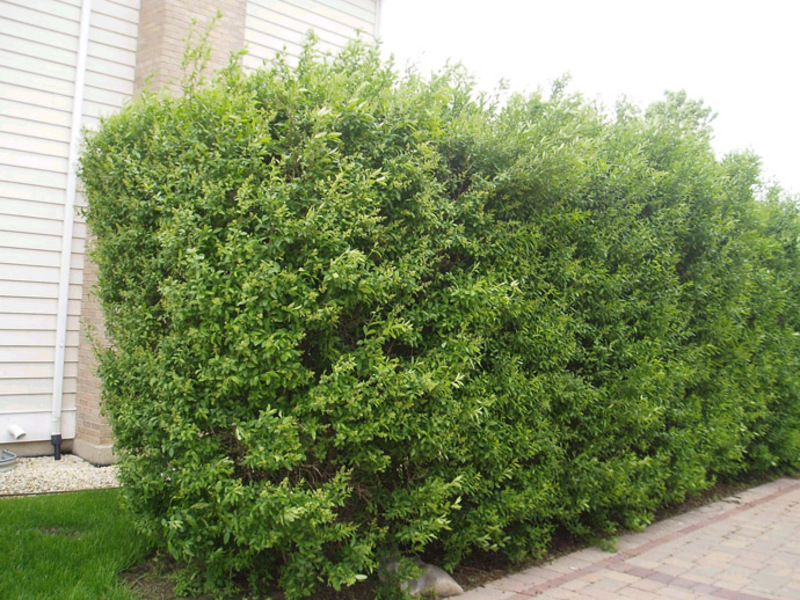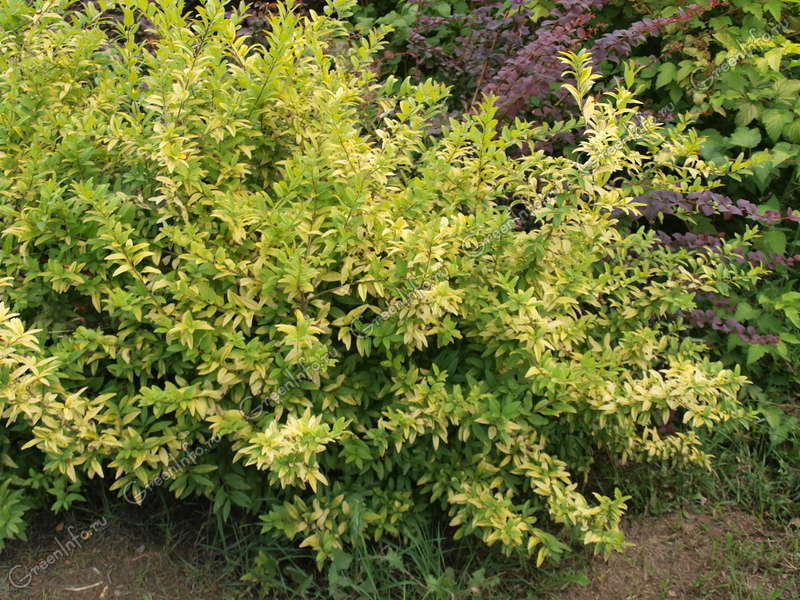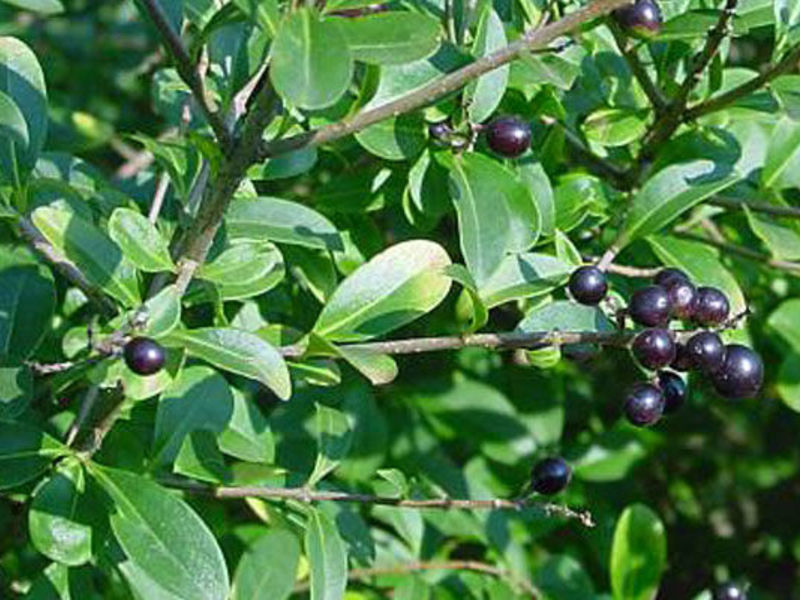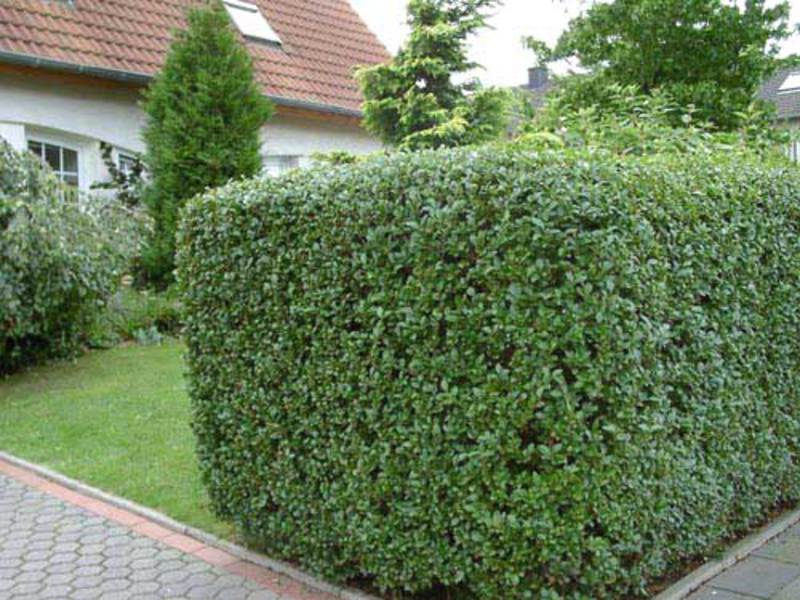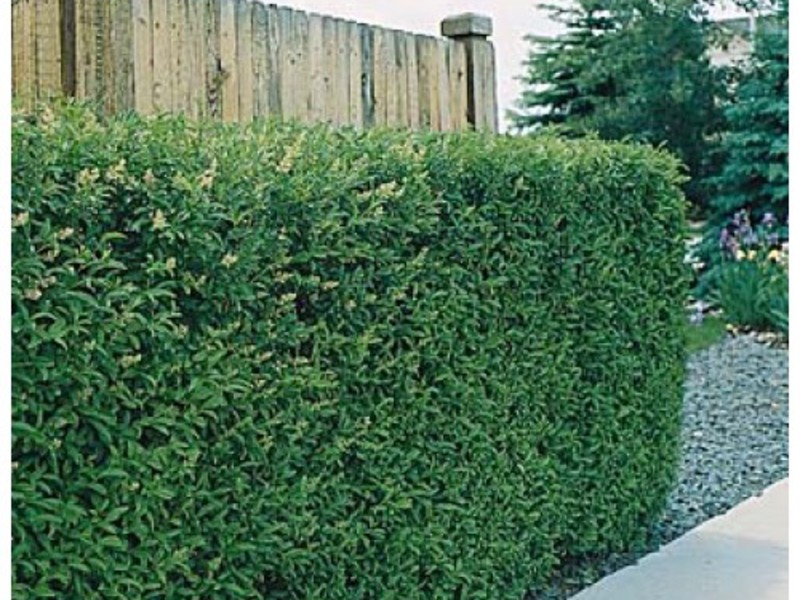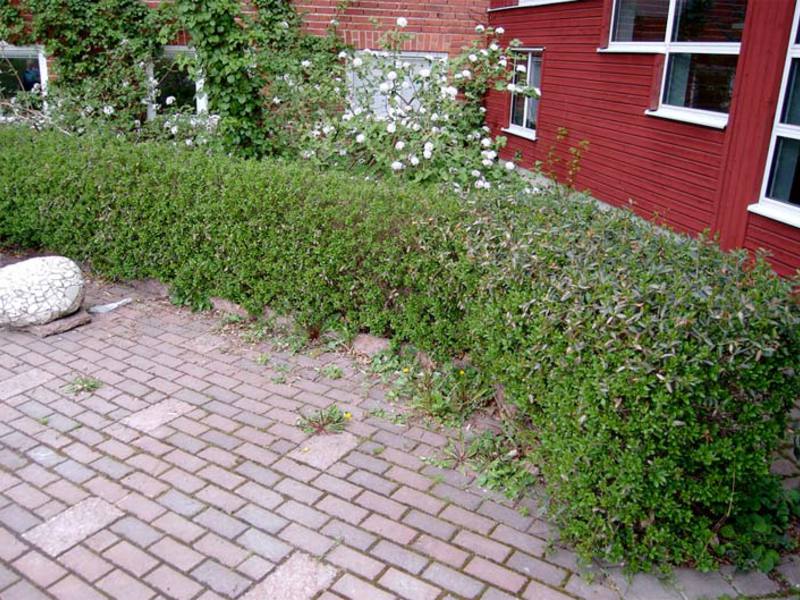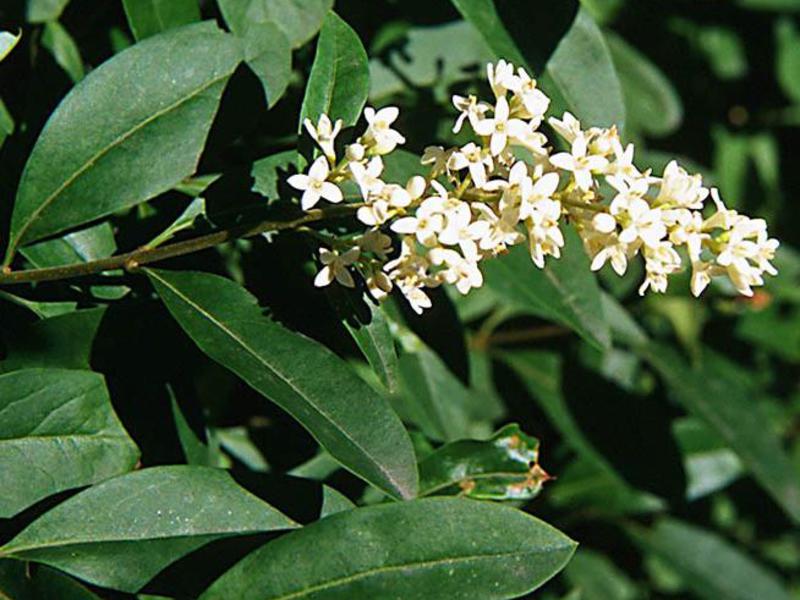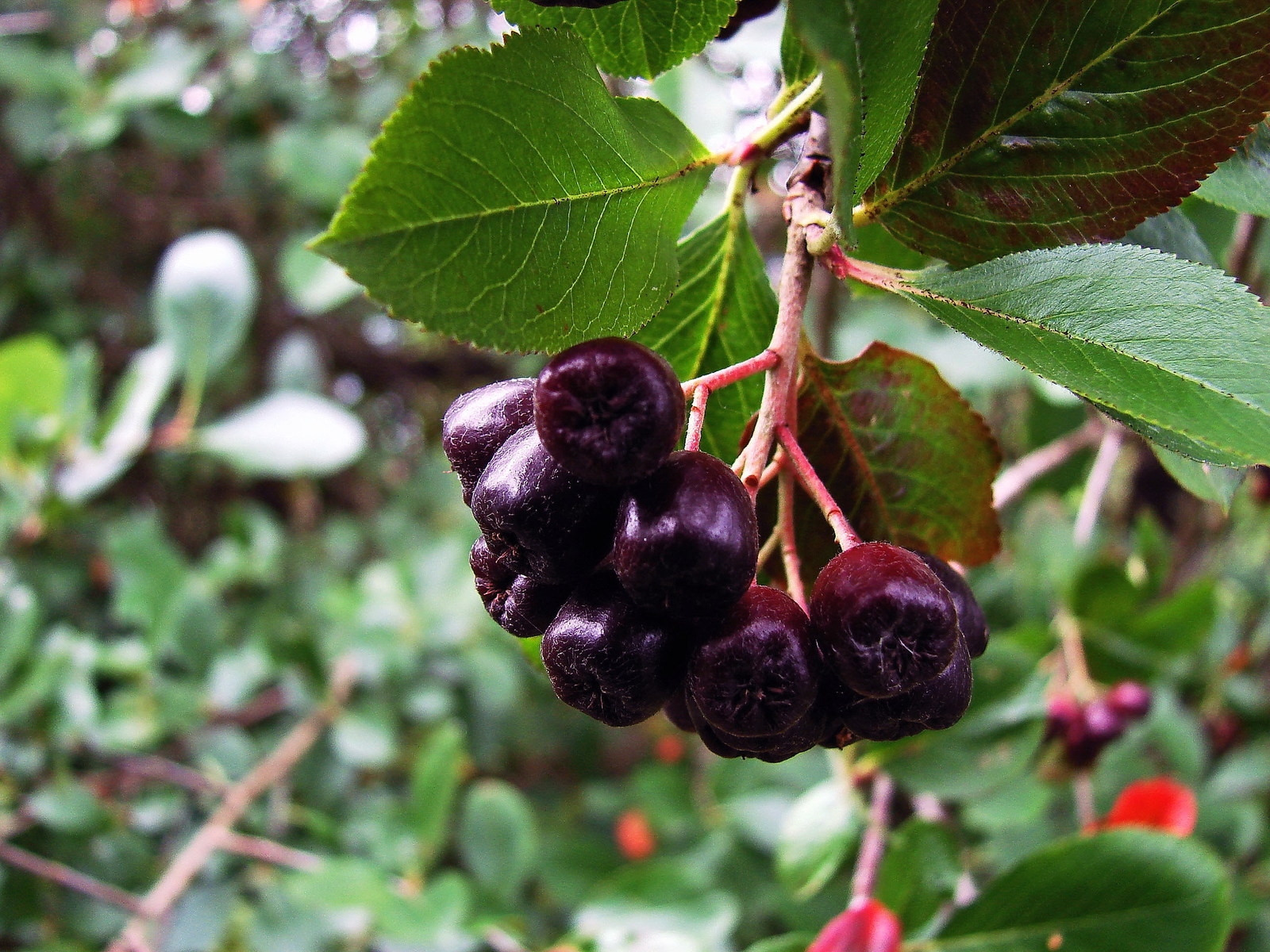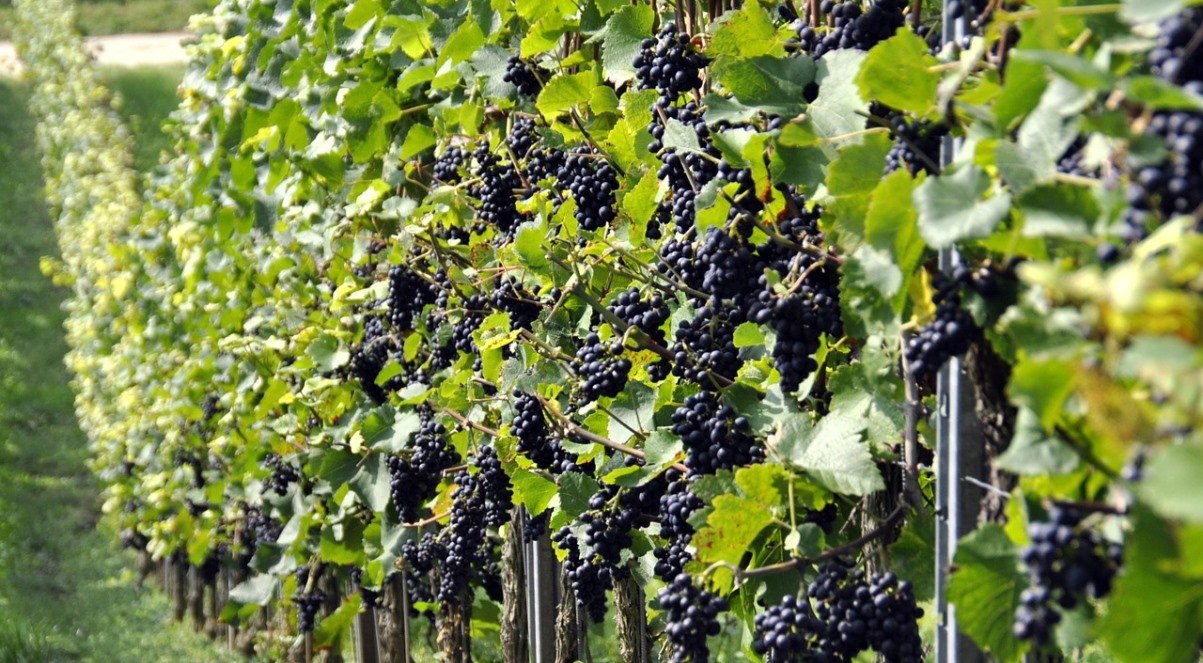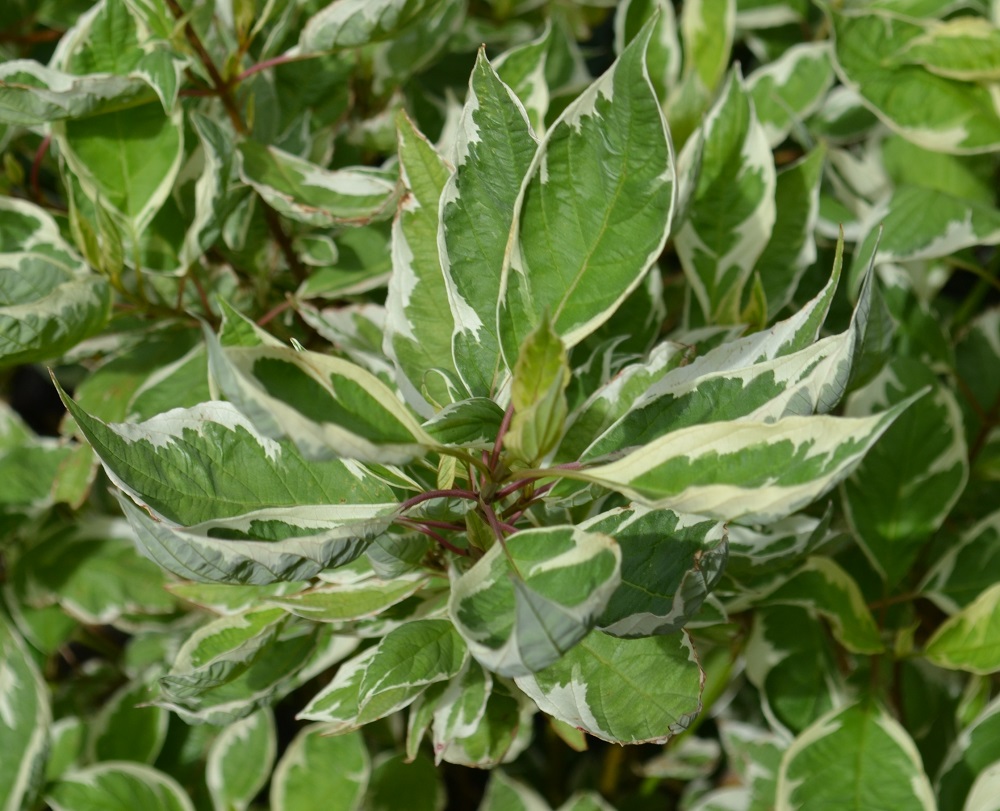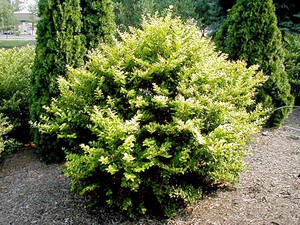 Among ornamental plants, the common privet stands out, which is a deciduous shrub that grows up to 5 m in length. Most often it has a wide and asymmetrical crown. However, it is she who provides the shrub with attractiveness, since it is very dense and formed by dense branches. For those gardeners who would like to transform their site, common privet is one of the attractive options. Moreover, even novice summer residents can grow this shrub.
Among ornamental plants, the common privet stands out, which is a deciduous shrub that grows up to 5 m in length. Most often it has a wide and asymmetrical crown. However, it is she who provides the shrub with attractiveness, since it is very dense and formed by dense branches. For those gardeners who would like to transform their site, common privet is one of the attractive options. Moreover, even novice summer residents can grow this shrub.
Content
Ligustrum vulgare - common privet
Already at the beginning of summer, the privet has flowers that provide it with an attractive appearance until the end of July. In September, the fruits begin to ripenhowever they are poisonous. Their ability to stick to the branches until the first frost allows them to maintain the attractiveness of the shrub. The flowers are distinguished by a pungent odor, the inflorescences growing from them have a racemose shape. The berries of common privet have a black paint with a gloss effect. This shrub grows narrow, long leaves, which, with the onset of autumn, change their original color to yellow-green.
Common privet is one of the commonly used shrubs by most landscape designers. In principle, this shrub can be considered unpretentious, since it can be grown on any soil, with the exception of those areas where acidic peat substrates prevail. Privet is a drought tolerant plant, so watering can be kept to a minimum. Privet demonstrates its decorative qualities as a hedge, and it succeeds perfectly due to the fact that it easily tolerates pruning.
Common privet is a cold-resistant crop, which can easily tolerate temperature fluctuations within - 30 degrees. Because of this, structures of various shapes are created from it - balls, pyramids, cylinders and other decorative elements in garden and park areas.
This shrub can always look attractive only if all the rules are followed exactly when planting and caring for it. It is very important that all activities are carried out on a regular basis.
How to properly care for?
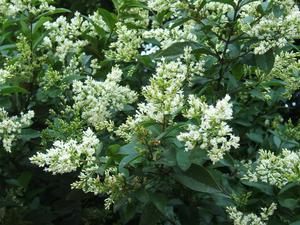 To create comfortable conditions for the root system of common privet and provide it with air, it is necessary regularly throughout the growing season to loosen the soil... You should think about mulching just before the summer. At this moment, the most favorable conditions are created for carrying out such an operation: the soil contains a sufficient amount of moisture and has an optimal temperature.
To create comfortable conditions for the root system of common privet and provide it with air, it is necessary regularly throughout the growing season to loosen the soil... You should think about mulching just before the summer. At this moment, the most favorable conditions are created for carrying out such an operation: the soil contains a sufficient amount of moisture and has an optimal temperature.
Common privet grows best in well-lit areas. Although it will not be a mistake to plant it in partial shade. This shrub requires little maintenance, but pruning should be done regularly.
How to prune common privet?
A photo of a shrub shows all its decorativeness, however, it can only look like this with proper care, which includes regular pruning.
Cutting the privet is only good for her, since it allows her to form a dense, branched crown. Therefore, in cases where it is necessary create curbs or hedges, experts opt for the common privet.
- It is best to cut the shrub in the evening, after which it is recommended to cover the plant with a damp cloth. It can be removed the next morning. This technique speeds up wound healing;
- trimming hedges is recommended in May and August. During this procedure, shoots must be removed by a third of the length;
- it is forbidden to cut the plant during flowering.
Very often, when the winter is extremely harsh, the shrubs suffer from severe frosts, which can cause the tips of the shoots to freeze. However, this is not a cause for concern, as all damaged areas can be easily removed during spring pruning.
Watering rules
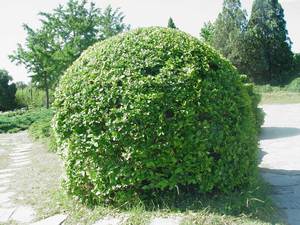 The need for moisture is highest in young bushes. Irrigation is recommended at least five times per season... So that the shrub does not experience a shortage of water, it is necessary to adhere to the following scheme when watering - 35-50 liters per 1 sq. m. Privet reacts best of all to watering, if they are carried out rarely, but abundantly. It is very important here to moisten the soil around the perimeter of the bush within a radius of 50 cm.
The need for moisture is highest in young bushes. Irrigation is recommended at least five times per season... So that the shrub does not experience a shortage of water, it is necessary to adhere to the following scheme when watering - 35-50 liters per 1 sq. m. Privet reacts best of all to watering, if they are carried out rarely, but abundantly. It is very important here to moisten the soil around the perimeter of the bush within a radius of 50 cm.
Do I need to feed?
Already in early spring, you should choose a day for foliar feeding. It is advisable to do this before bud break, while the temperature should be kept at about 5 degrees Celsius. Replenish plant nutrient requirements with concentrated urea solution... The positive effect of this operation is manifested in the fact that it protects the shrub from pests that have successfully overwintered. To prepare the solution, you need to take 0.5 kg of fertilizer and dilute it in 10 liters of water. As a result of such processing, privet will receive the nitrogen it needs so much.
Root dressings can also be used for this plant. This is also done before bud break. This will require a small amount of granular fertilizer, which must be diluted in the same volume of water. The prepared urea solution is watered with privet plants. Top dressing can be carried out in the fall: at this time of the year, potash fertilizers are applied to the soil, which will help the plants to overwinter with less losses.
What are the spots on the leaves?
In the process of growing privet, an ordinary gardener may see greenish or grayish spots on the leaves. It is true sign of increased soil acidity... The situation can be corrected by adding lime to the soil. To do this, you need to scatter slaked lime on the surface of the soil with a thin layer. Pretty soon you will notice that there will be no trace of specks on the leaves.
Dolomite flour is an effective means of restoring soil acidity to normal levels. At the same time, with it, the soil is enriched with microelements that privet needs. This fertilizer is often used by gardeners, because even after decades it does not lose its qualities and at the same time is inexpensive.
What do you need to know when landing?
First of all, the gardener needs to decide where this shrub will be planted. The most suitable for common privet is a well-lit area. If the place for planting shrubs is chosen near stationary buildings, then it is necessary maintain an indent from them 100 cm... Then you will not have much trouble when it comes time to prune the bushes.
Training
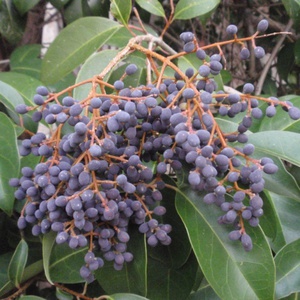 If you want to acquire a decorative element of landscape design on your site, then you will first have to prepare a site for planting. Be sure to dig the soil to a depth of 20-30 cm, where a hole is subsequently made. When determining the size, it should be borne in mind that its depth should be about 30 cm more than the root system of the bush.
If you want to acquire a decorative element of landscape design on your site, then you will first have to prepare a site for planting. Be sure to dig the soil to a depth of 20-30 cm, where a hole is subsequently made. When determining the size, it should be borne in mind that its depth should be about 30 cm more than the root system of the bush.
Be sure to water the pit well before planting. When all the moisture is absorbed to a drop, it is filled with a mixture prepared from garden soil and composttaken in equal amounts. When the plant is submerged, it is important that the roots are in their natural position.
Seedling care
Having finished planting the shrub, the moment comes when you can start taking care of privet. Among the primary operations, it is worth highlighting the initial pruning. It is thanks to her that the plant will acquire the necessary crown shape. You can ensure the decorativeness of common privet by cutting the branch by one third of the length.
It is possible to increase the chances of survival of the shrub, provided that during the first three weeks after planting the gardener will keep the soil moist.
- when the plant takes root and begins to grow, watering is limited;
- it is subsequently necessary to carry out it only during periods of drought;
- it is imperative to cover the root zone with mulch with a layer of 1-2 cm.
Decorative fence
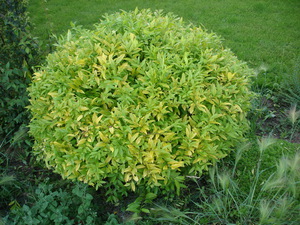 Common privet is a fairly popular plant that is used to create hedges. Moreover, you can implement this idea on your own or involve professionals in the work. With the help of this shrub, landscaping is often carried out and hedges are created. But in order for privet to become a spectacular decoration of the territory, it will be necessary to provide appropriate care for the planting material.
Common privet is a fairly popular plant that is used to create hedges. Moreover, you can implement this idea on your own or involve professionals in the work. With the help of this shrub, landscaping is often carried out and hedges are created. But in order for privet to become a spectacular decoration of the territory, it will be necessary to provide appropriate care for the planting material.
Even before planting a young shrub in the chosen place, it is necessary determine the line of the future row... The easiest way to do this is with a rope. To do this, it is pulled parallel to the dug trench, where it is planned to plant common privet bushes. Plants are placed no closer than 40 cm apart. Common privet is planted alternately so that the lush part of the bushes faces in different directions. After planting, it is necessary to water the seedlings until the moisture is completely absorbed.
Pests and diseases
Despite all the decorative properties of common privet, it, like other plants, is susceptible to various pests, which can upset many gardeners. However, if planting and care is carried out in accordance with the rules, then such a risk for the shrub can be minimized. Modern varieties of common privet thrive when grown in places with unfavorable conditions.
At the same time, certain measures are required from the gardener himself so that the plant coped better with pest attacks.
- with the onset of summer, it is necessary to determine the points of excessive growth and remove them;
- be sure to prune shoots located at right angles to the hedge;
- each next trimming of the bush must be completed with fertilization and fungicide treatment. In this case, it will be possible not only to maintain the correct shape of the crown, but also to increase the resistance of the shrub to fungal diseases.
Types of privet
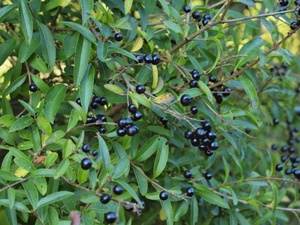 Today, more than 20 types of common privet are known, actively used in landscape design. These shrubs grow as a deciduous shrub or a compact tree with a dense crown. The resulting flowers have a rich color palette, which may include white, yellow and other shades... In the fall, fruits ripen, which are poisonous. The leaves of the shrub are variegated, the berries are bright, the crown is round in miniature size.
Today, more than 20 types of common privet are known, actively used in landscape design. These shrubs grow as a deciduous shrub or a compact tree with a dense crown. The resulting flowers have a rich color palette, which may include white, yellow and other shades... In the fall, fruits ripen, which are poisonous. The leaves of the shrub are variegated, the berries are bright, the crown is round in miniature size.
Most gardeners who have had experience in growing common privet confirm the unpretentiousness of this plant. However, planting and caring for this shrub in each case can provide for its own characteristics, determined by the type of soil in which the plants are planted. It is not recommended to place the bushes in places where moisture stagnates, since there they will quickly lose their attractiveness. The most suitable places for growing privet are places where loose loam predominates and there is a lot of leaf humus. When planting privet in a place with dense soil, it is imperative to dig it up.
Regardless of the variety, this shrub is a cold-resistant crop. But during preparation for winter, it should be cover with dry leaves... Evergreen privet varieties are often used to decorate greenhouses.
Conclusion
Many gardeners have probably seen common privet more than once, although they did not suspect that amazing forms can be given to this plant. It is because of its pronounced decorativeness that this shrub is often used in the design of a variety of objects, including as a hedge. Therefore, it can often be found not only in summer cottages, but also in park areas. It is not so difficult to grow a shrub, because privet is unpretentious, therefore, given the peculiarities, even in not quite suitable conditions, it can grow and regularly delight with its flowering.
